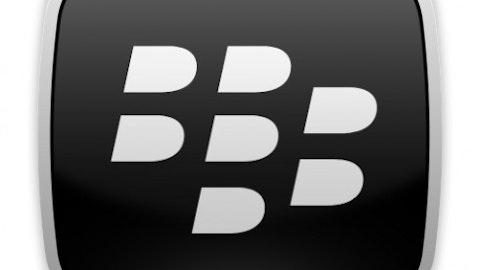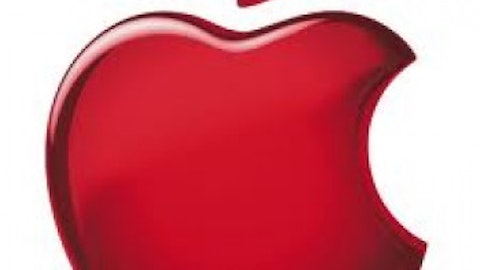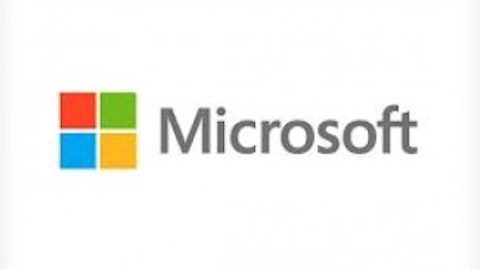Last quarter, 76% of Apple’s revenue came from the iPhone and the iPad. That’s why every headline regarding a decline in parts orders or shipments drags the stock down. The company needs a third product to balance everything out.
A smart watch would be a cute niche product, but it wouldn’t boost sales by a lot. A transparent iPhone would be cool, but simply add to the weight of its iPhone segment. Could an iTV actually grow into Apple’s third source of revenue?
An uphill battle
I see two major hurdles Apple Inc. (NASDAQ:AAPL) has to overcome to release a market-changing smart TV: market saturation and margins.
Televisions are the cheapest they have ever been, but demand is waning. During last year’s holiday season, sales of television sets declined 2% from the previous year, according to NPD Group analyst Stephen Baker.
The television set market is already crowded, with South Korean companies Samsung and Laclede Group Inc (NYSE:LG) completely dominating Japanese manufacturers Sony Corporation (ADR) (NYSE:SNE) and Panasonic Corporation (ADR) (NYSE:PC). According to this market projection by NPD, the market is extremely saturated, and will only experience marginal growth over the next three years. Prices will likely drop as demand slows.
Source: http://www.worldtvpc.com/, Data from NPD
Baker noted that during the holiday season, 50-55 inch models sold at a lower average price ($520) than 40-49 inch models ($615), since the smaller models offered more features, such as LED screens and Internet connectivity, while the larger ones did not. More budget-conscious consumers opted for the larger screens above all other features – which indicates demand for screen size, not Internet features, is more important.
Consider what Apple is supposedly offering – a 50-60 inch screen that is also equipped with bleeding edge Internet and gesture-based features. To match the facial recognition features in Samsung Electronics Co., Ltd. (KRX:005930), Sony Corporation (ADR) (NYSE:SNE) and Panasonic Corporation (ADR) (NYSE:PC) televisions, Apple would also have to add a front-facing camera. The rumor mills are pegging the final price of the iTV between $1,500 and $2,000. In other words, consumers could get four 55-inch TVs instead of a single Apple iTV.
Television manufacturers are also offering more feature-rich sets to attract consumers to lower-priced sets, and plasma screens for higher-end ones. Sony Corporation (ADR) (NYSE:SNE) is offering a full range of Internet enabled Smart TVs for $500 to $1,500. Panasonic’s Viera Smart TVs are sold for $700 to $2,000.
That means Apple needs to bring its price point down to around $1,000 to remain competitive. That would mean sacrificing margins – just as television set manufacturers Sony and Panasonic Corporation (ADR) (NYSE:PC) learned the hard way – to generate sales. Let’s see what the television business has done to Sony and Panasonic’s margins over the past five years.
On the other hand, Apple could sell its television sets at lower margins to generate content sales through its iTunes Store, similar to Amazon.com, Inc. (NASDAQ:AMZN)’s tactic with its loss-leading Kindle Fire.
My final concern regarding Apple’s rumored entry into the TV business is that it is a slow moving market. Apple is the most profitable store by square foot in America for a simple reason – it moves its inventory quickly by selling products that are replaced in one or two years. Televisions are slow moving products, that do not offer predictable upgrade cycles that are as easy to forecast as iOS product sales.
Bottom Line
Despite all the half-truths and rumors about the iTV polluting the Internet these days, Apple investors should still keep a close eye on a possible entry into the television business. While television could be the key to building a solid third pillar to Apple’s business, it could also hurt its margins going forward. Just read the crazy headlines with a grain of salt.
The article Apple iTV: The Absurdity Continues originally appeared on Fool.com is written by Leo Sun.
Copyright © 1995 – 2013 The Motley Fool, LLC. All rights reserved. The Motley Fool has a disclosure policy.





